‘It’ll never work, it just won’t.’ ‘The weight balance is just wrong.’ ‘It doesn’t have enough torque.’ ‘It’s a Lamborghini, it will just break all the time.’ These are some of the comments I heard being thrown around in the drifting scene before Daigo Saito and his team had even finished transforming Wataru Kato’s old Lamborghini Murciélago into a pro-spec drift machine.
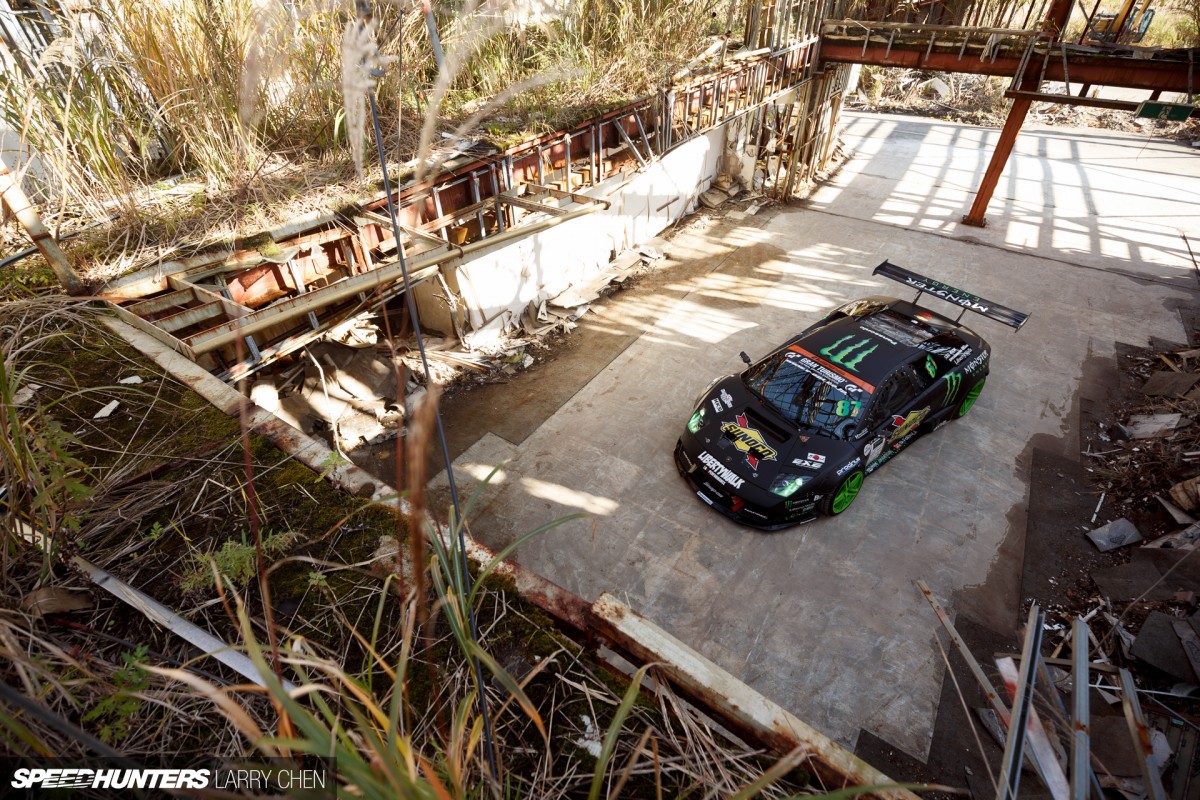
But if you’ve watched Monster Energy’s new Battle Drift video where the Lambo runs with one of Vaughn Gittin Jr.’s Mustang RTRs for a bit of on-camera fun, you’ll know that it works pretty damn well. So how did Daigo do it?
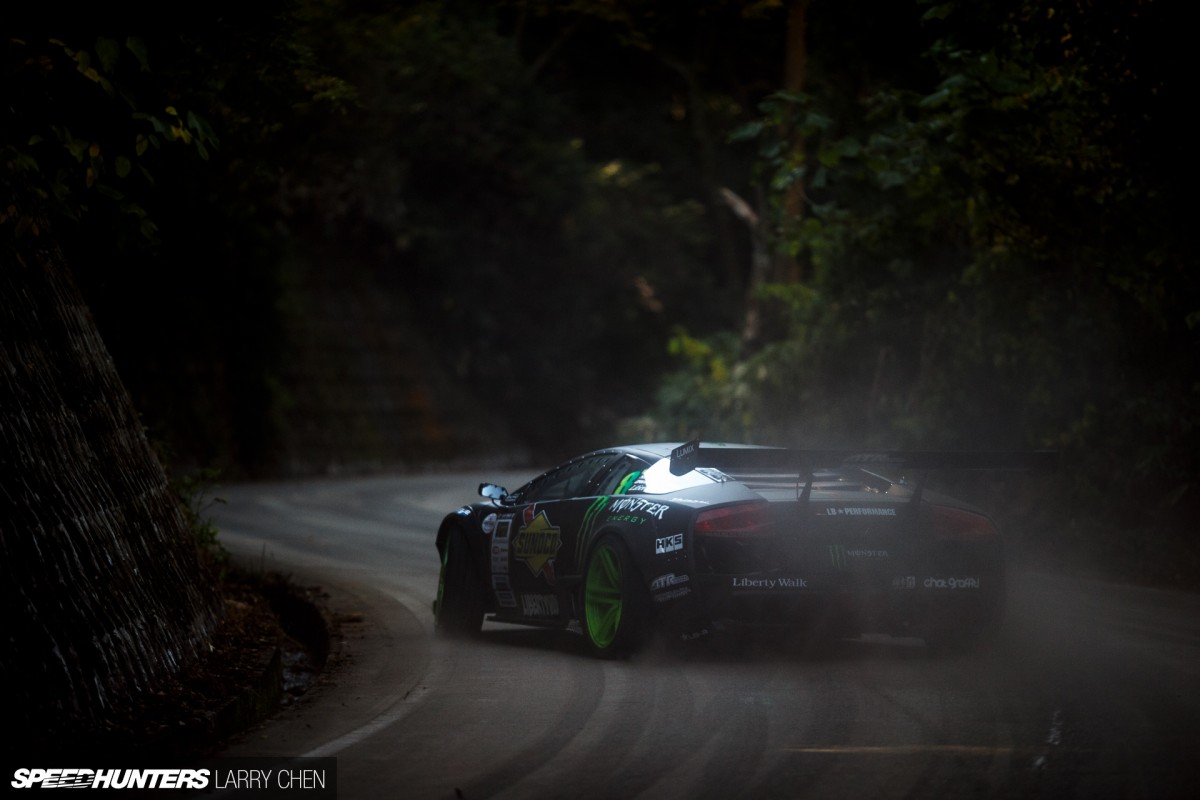
How on earth did he take a Lamborghini Murciélago and transform it into a competitive slide monster?
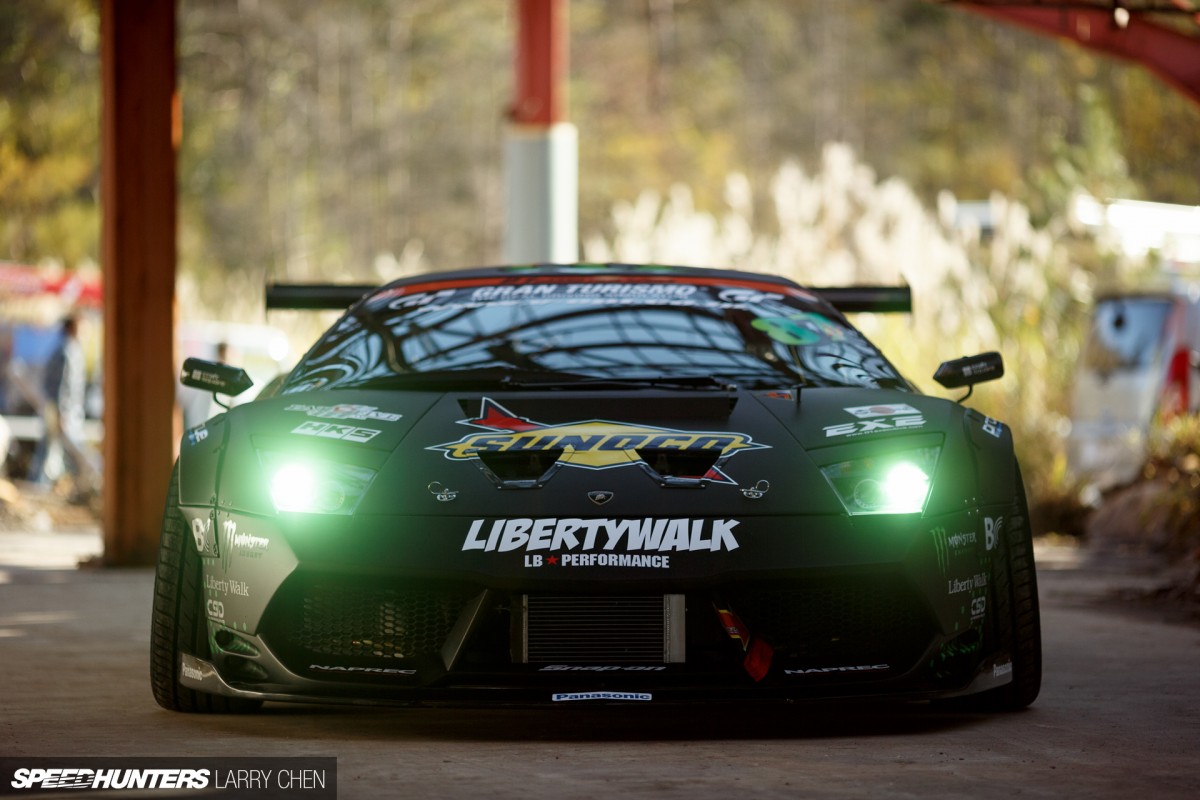
Well, thanks to Larry shooting a set of images at the cool, abandoned Russian village location in Niigata, Japan, where the film was shot by Luke Huxham, we’re able to investigate all the intricacies that make this one of the most bonkers drift projects ever dreamed up.
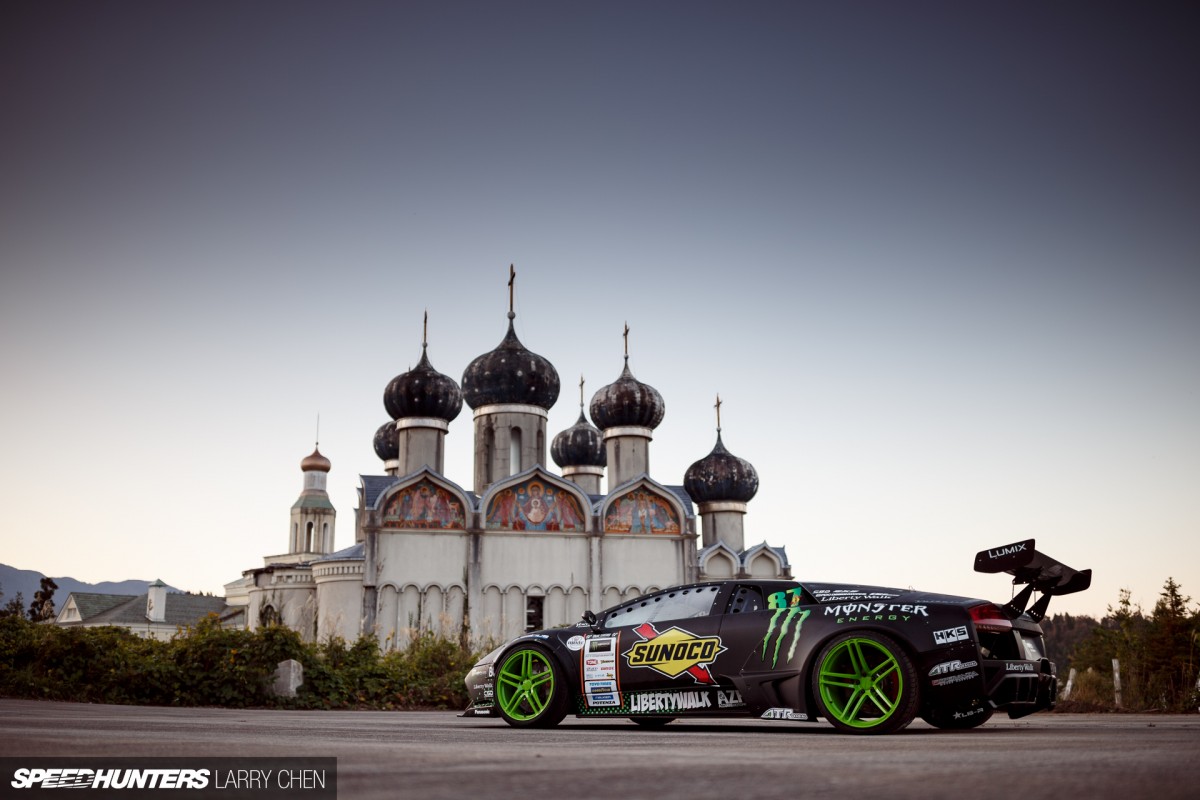
If there’s anything I can say about Daigo Saito, it’s that he should never be underestimated. He’s a driver that knows exactly how talented he is, and he’s constantly pushing and challenging himself with crazier engines and chassis solutions. What’s it all for? Well, I’m sure personal satisfaction is one part, but if you think about it, what is the single most important thing about drifting? Making a mark; creating a show; standing out from the crowd; and not only with your driving, but with the cars you drive.
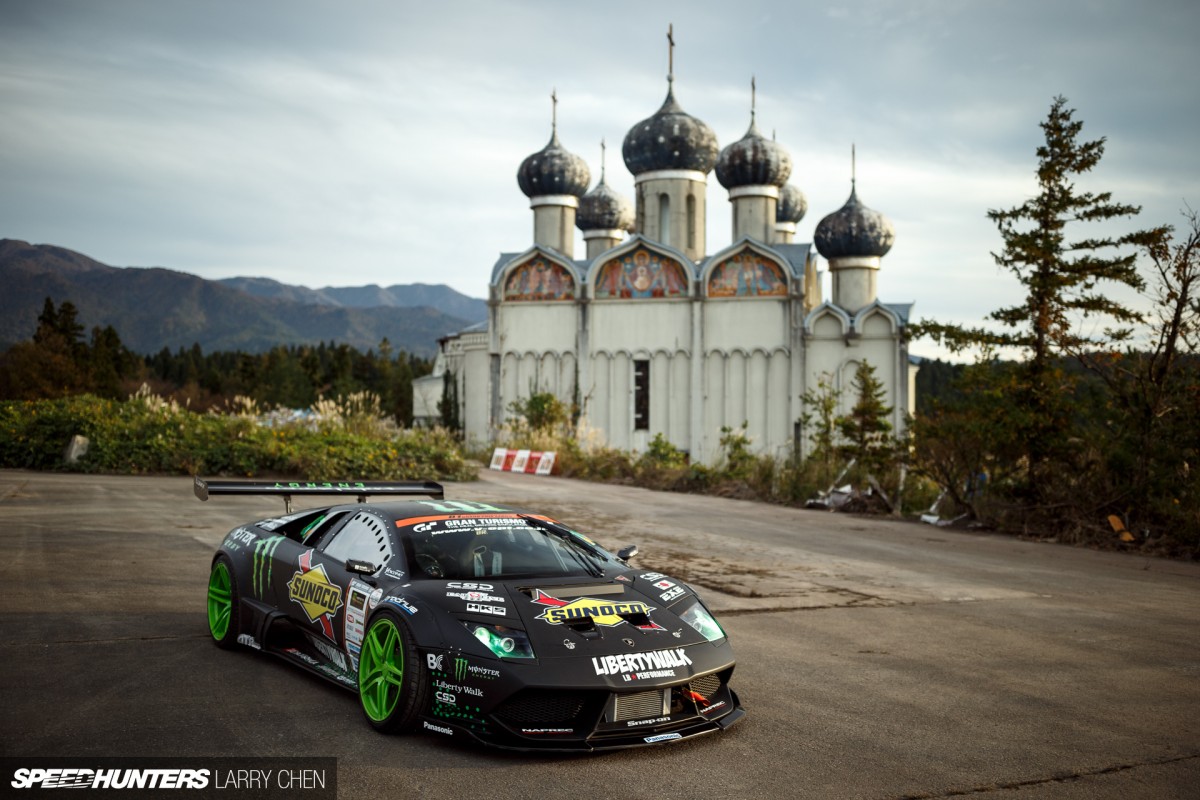
And with Daigo having proven that he’s pretty much the best out there, where else could he have gone but into the realm of the supercar.
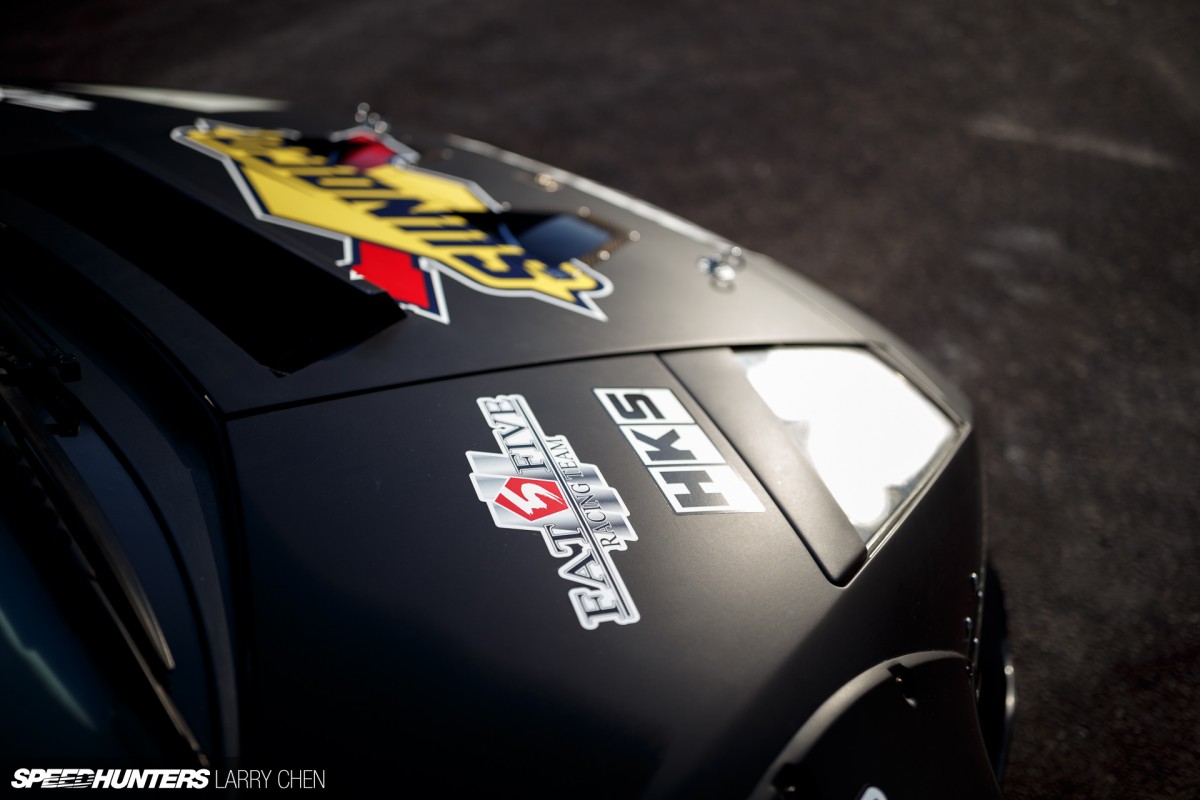
Some might call it sacrilegious, but what a superb idea it was to butcher up a Murciélago; the haters will hate and the lovers will love and the internet and drifting world will go wild. And it has, especially after its first demo run at the D1 Grand Prix round in Odaiba earlier this fall where Daigo proved that this car isn’t just an exercise in marketing, but a machine capable of competing at the highest echelon of the sport.
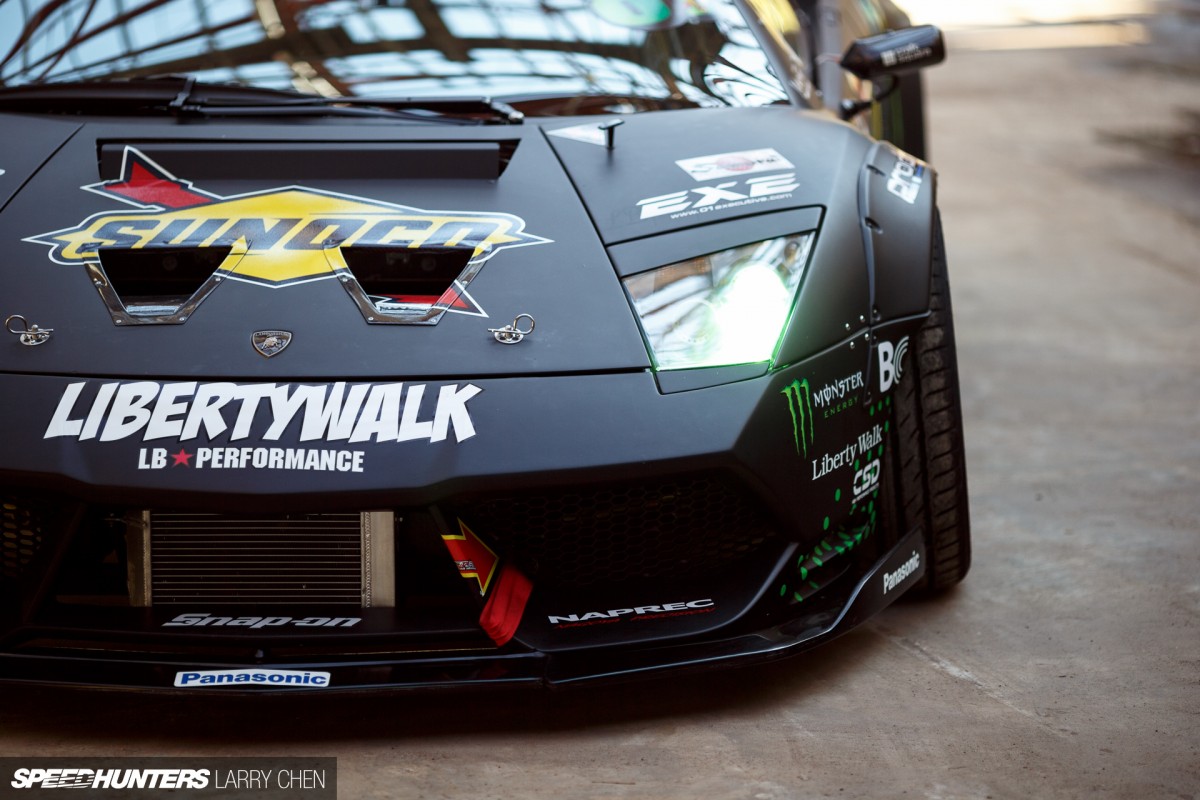
Plus, in its former life with Liberty Walk’s Kato-san, it had already been transformed with LBW aero. The metamorphose from wild street car to D1GP drift weapon has seen most of the kit retained (including the over-fenders, of course) and a few other touches added to the mix, like the three big front intakes on the bonnet that help direct air to the radiator and then dump it out once its purpose is served.
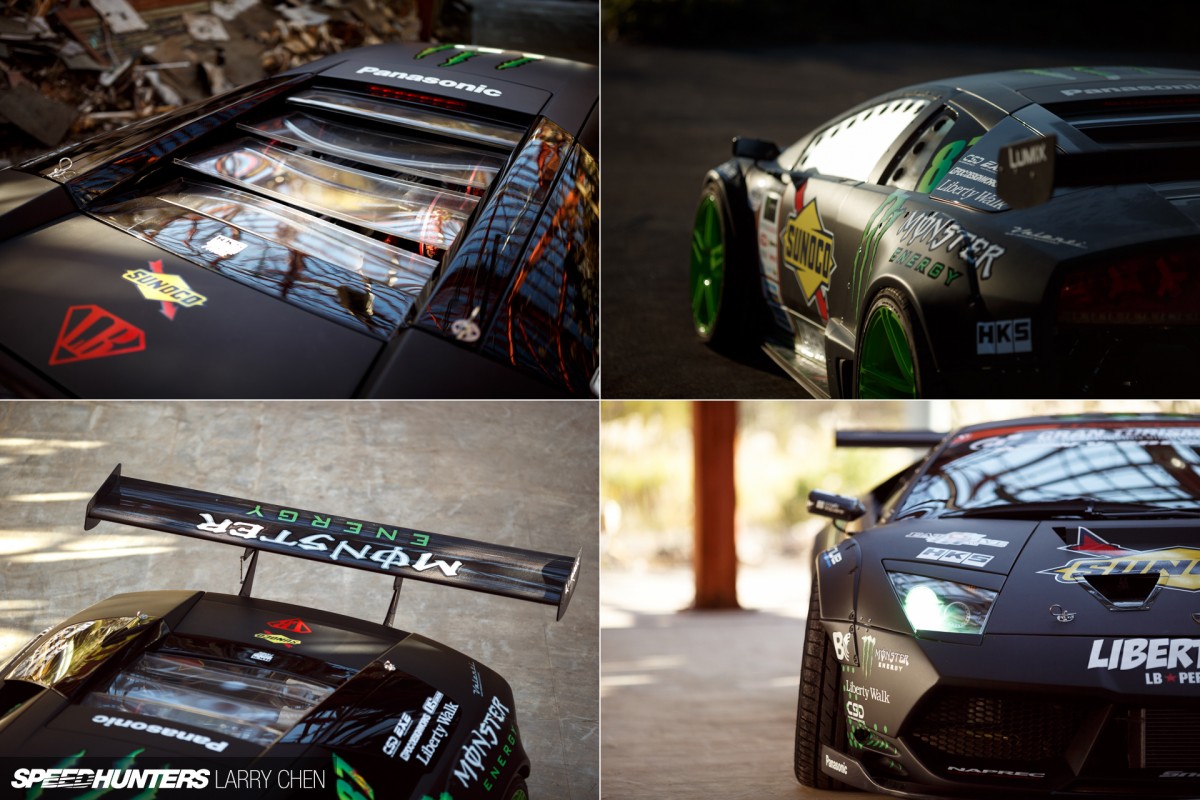
The original flat white exterior of the Lambo was painted over with a satin black finish which adds great contrast to the livery…
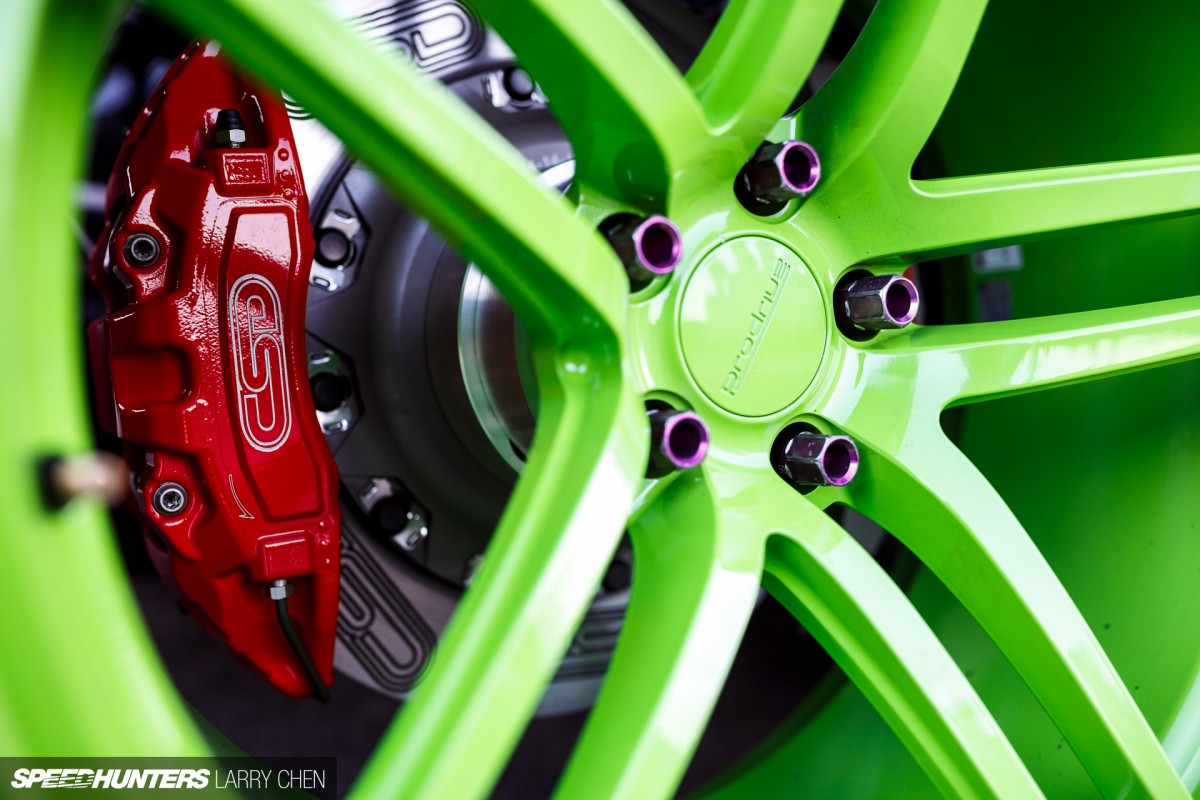
And its huge forged monoblock Prodrive GC-05K wheels, which have been custom-painted in Monster Energy green. Like on every LBW car, the brake package is courtesy of CSD, with big 6-pot callipers being employed both front and rear, and biting down hard on 2-piece rotors slotted with the CSD logo.
CHAPTER TWO
Adding Functionality
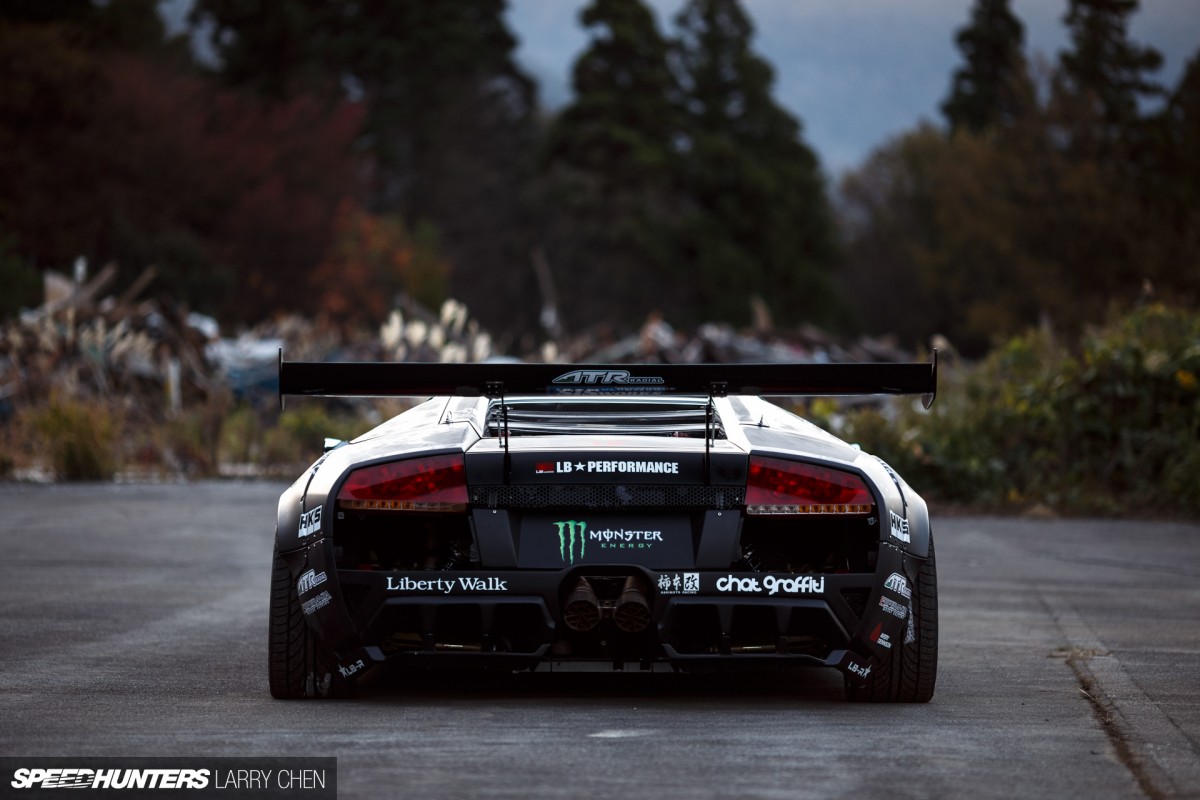
As you’d expect, the Murciélago has ditched its previously fitted air suspension in favour of something more suited to pro drifting, and you’ll see this in a little more detail further down the page. That said, the Lambo’s stance is wild; it sits ridiculously low yet runs the right sort of steering and overall suspension geometry to allow it to react and handle while going sideways.
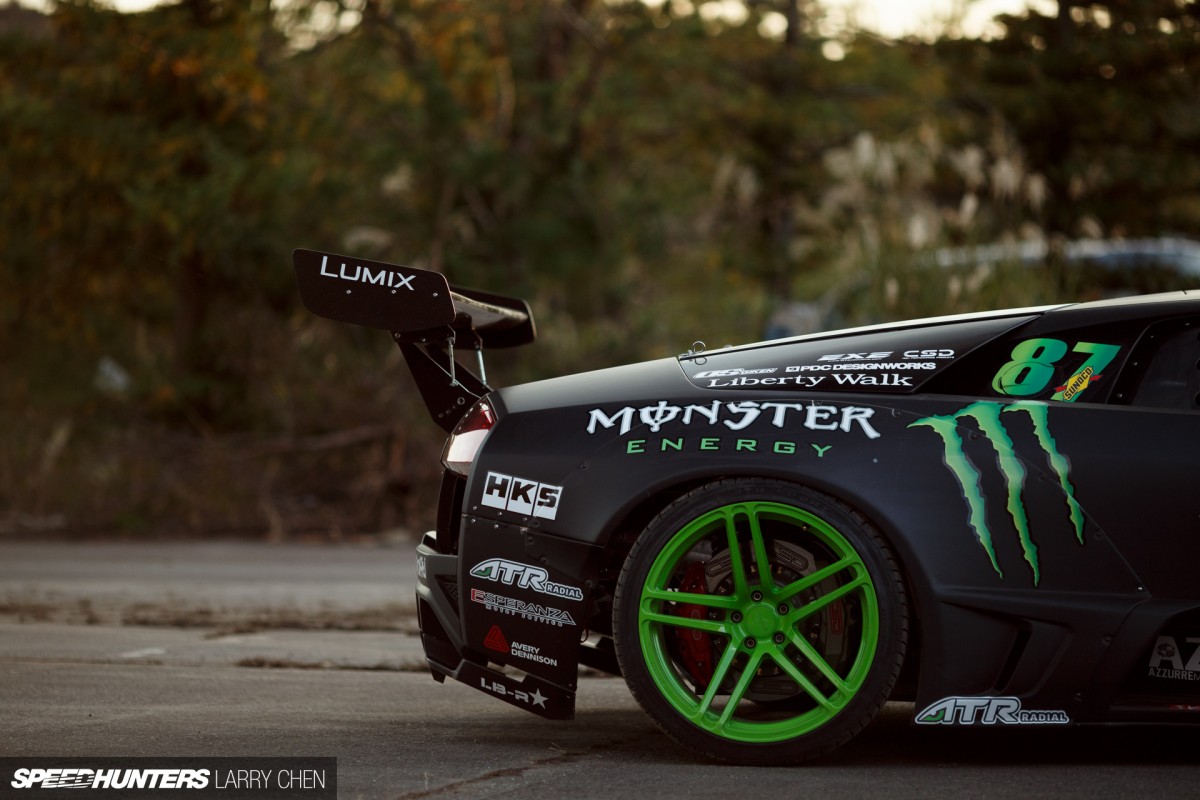
The rear end is finished off with a large GT wing that adds further character to car.
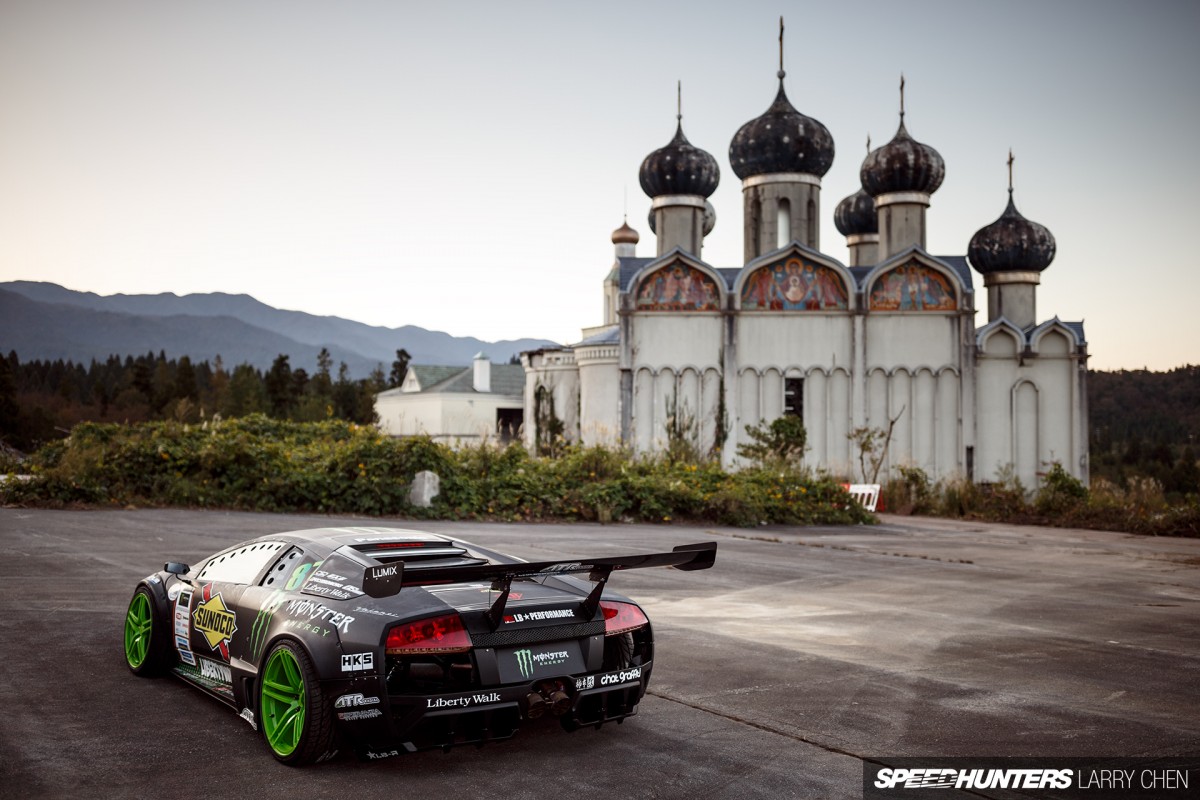
I still can’t get over the ridiculously cool location where Battle Drift was shot at – a derelict Russian-themed park in Japan which looks as picturesque as it does creepy.
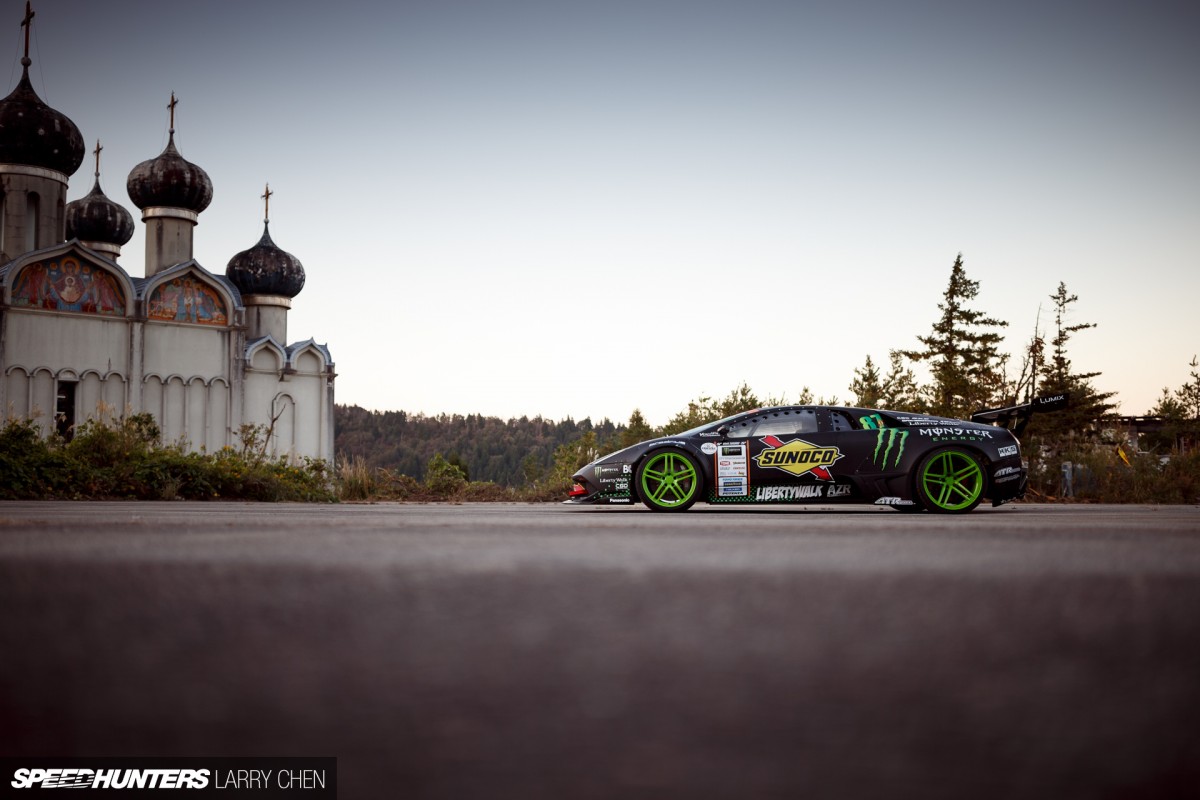
There’s no doubt that this is one very special looking Lamborghini, but as you can imagine, in transforming a big, mid-engined supercar into a drift car, beneath the skin is where the majority of the work was done.
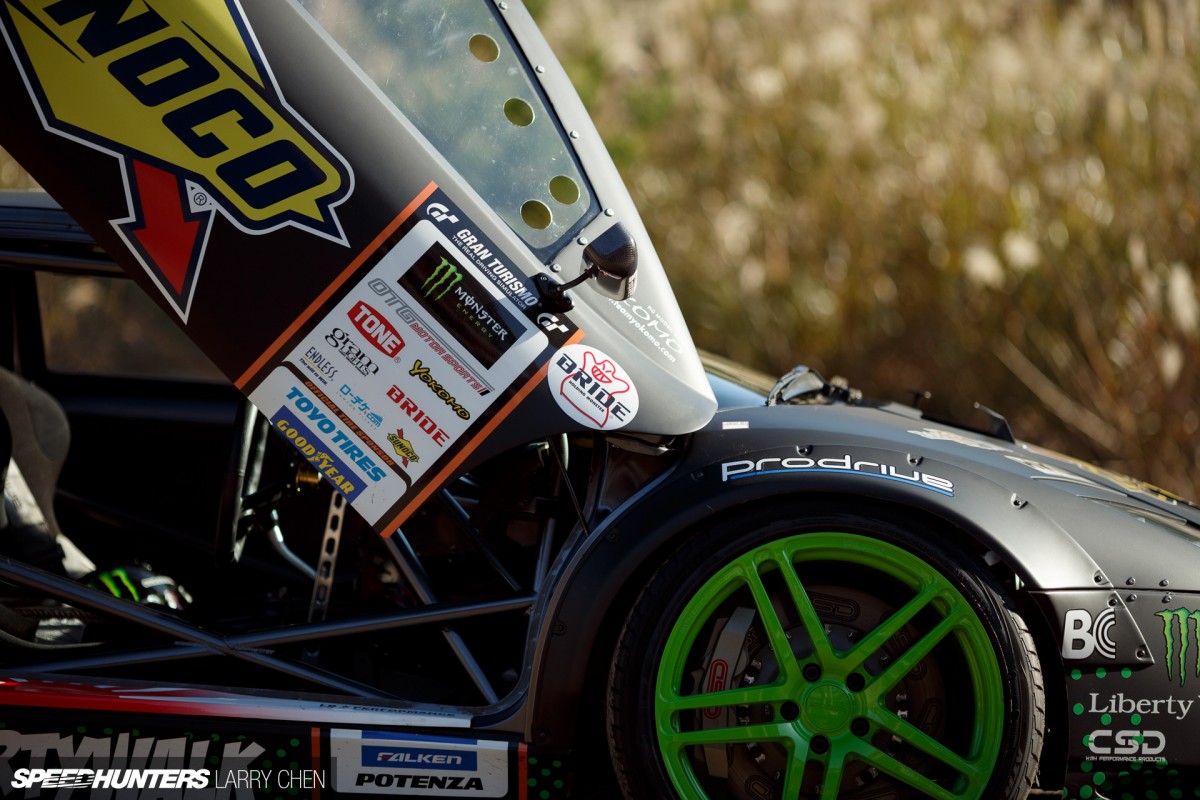
You begin to understand what was required to make this car competitive in Japanese pro drifting when you lift up the lightweight carbon fiber drivers door. Yes, carbon doors – they’re one area of many around the car where kilograms were shed in an attempt to chisel away at the Murciélago’s 1,665kg stock weight.
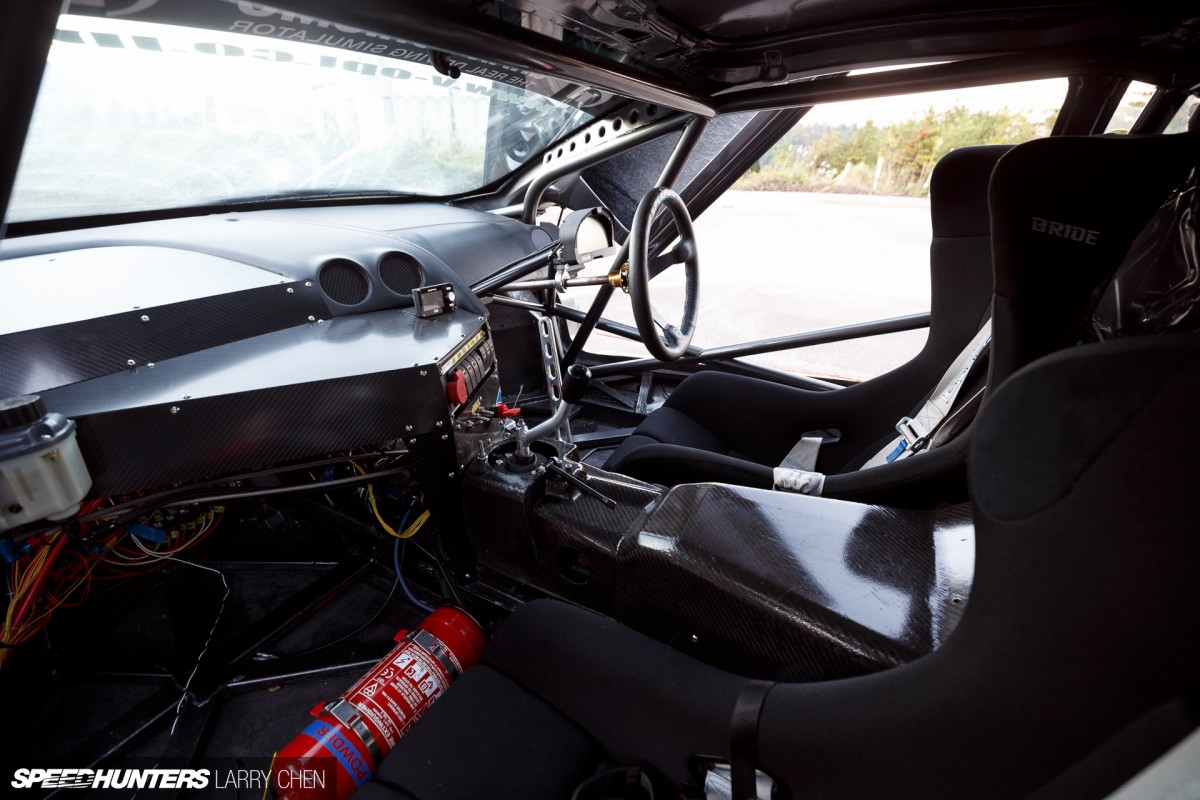
Inside, there’s not a whole lot left of the original cockpit – call it an exercise in pure function.
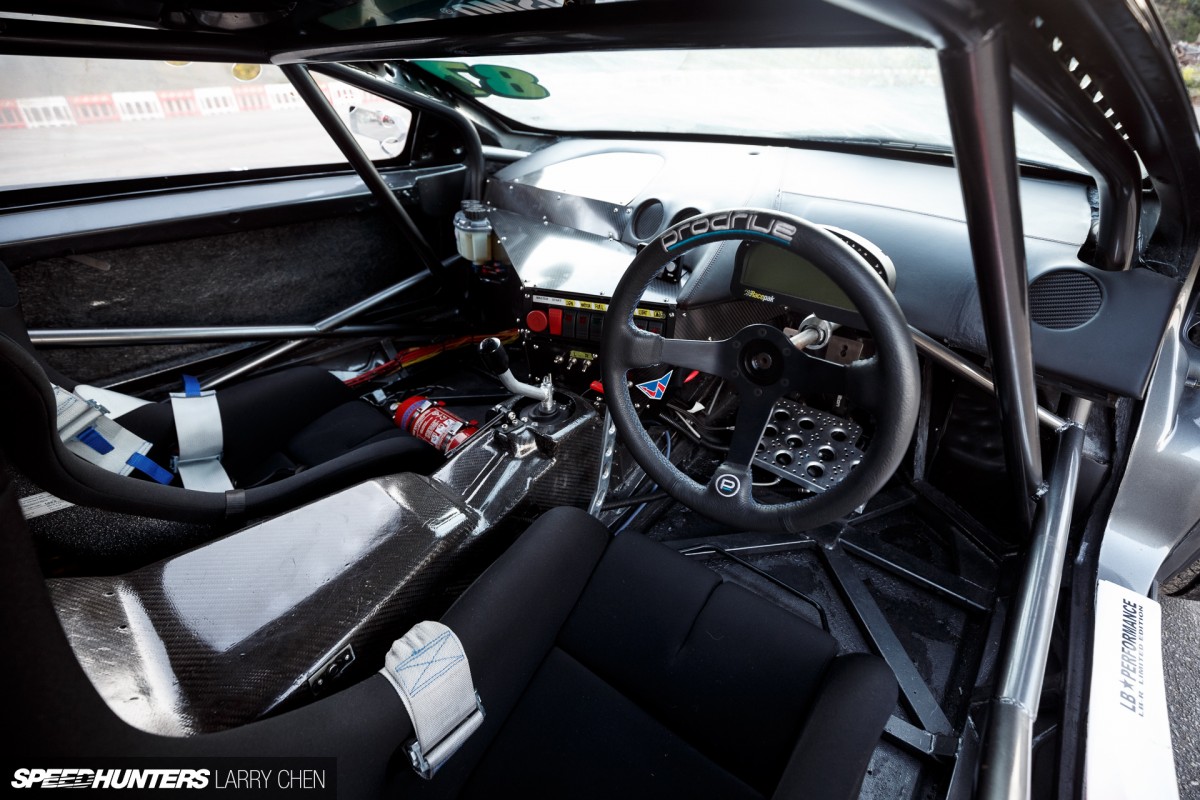
With the interior gutted, Daigo’s team went to work fabricating a serious rollcage, something you’ll find in all of his cars these days, and a far cry from most Japanese-built pro drift machines which still lag behind in this area.
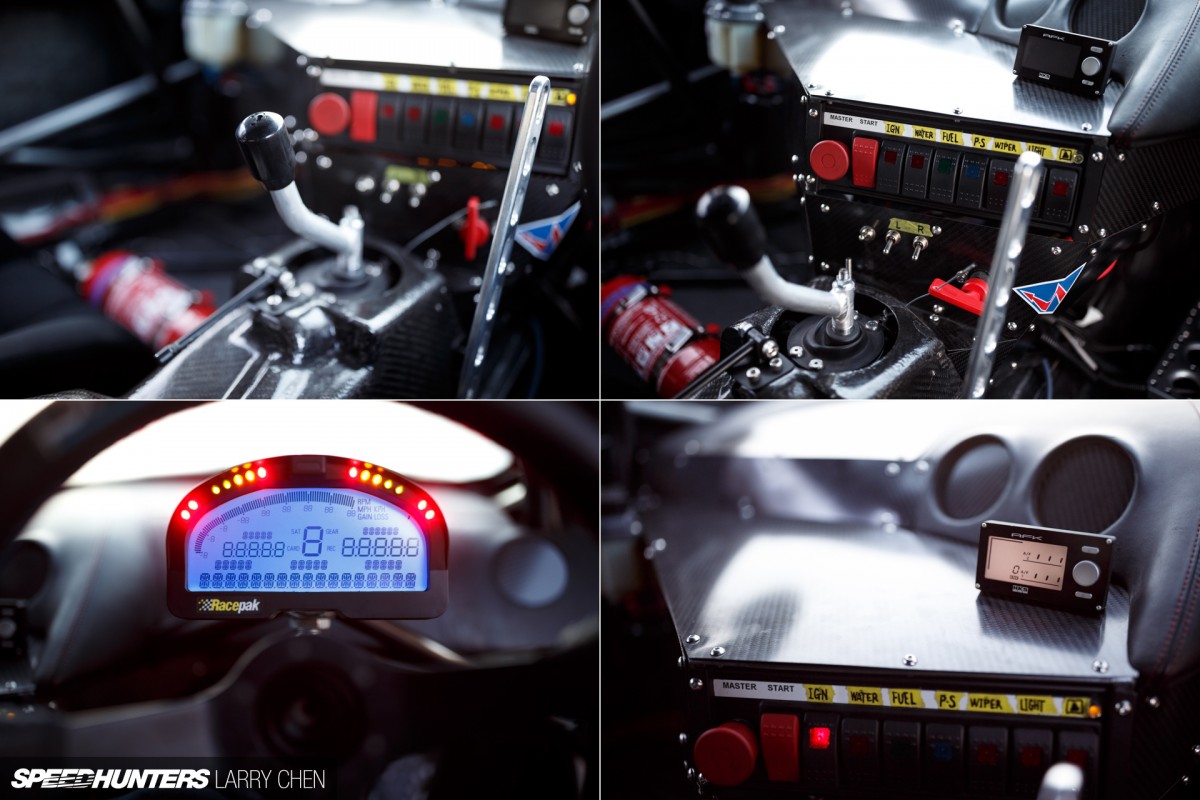
Carbon fiber was used to construct the central tunnel, and also for the custom switch panel. Since the driving position has been moved slightly rearward, the shift lever had to be extended backwards so that it falls to hand easily. Daigo still employs the Lamborghini’s original 6-speed manual H-pattern transmission, but a sequential might be in the works before the car sees proper competition from 2016. Aside from a Racepak IQ3 dash unit and an HKS A/F Knock Amp, there’s nothing much else to distract the man himself from his driving duties.
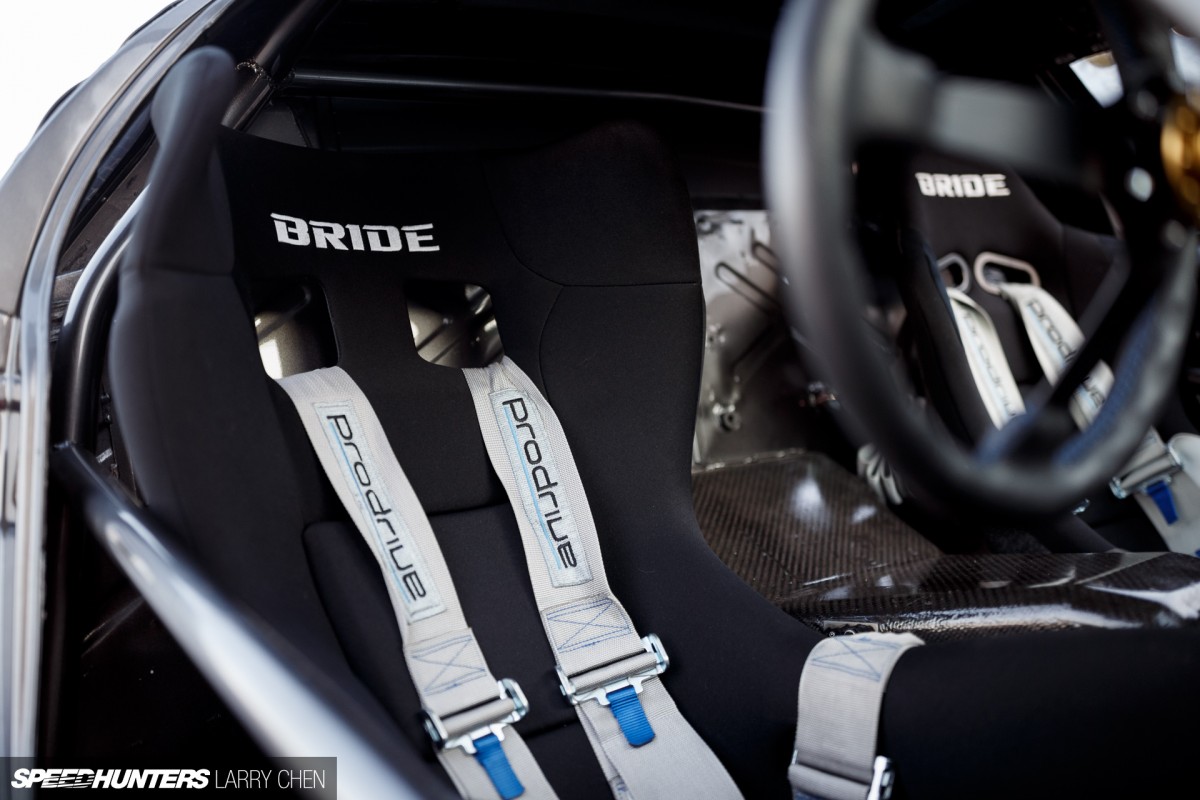
The aforementioned cage was designed to not only allow decent access into the Bride Proface fixed-back seat on the driver’s side, but also to ensure there is clearance with the seat itself. A Bride Zeta III is fitted on the passenger’s side, with Prodrive/Willans harnesses for both occupants.
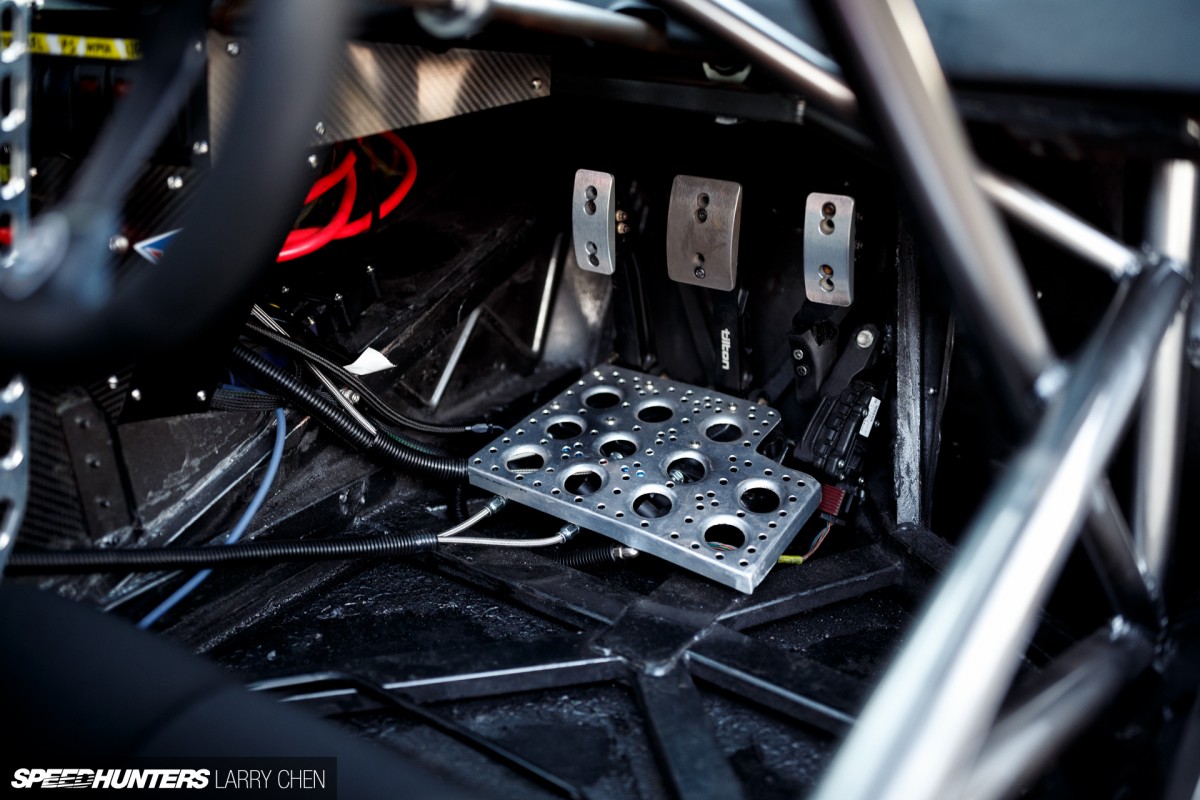
In the depths of the driver footwell is a fully adjustable Tilton pedal box; a necessity on a car like this, because once the seat has been positioned for optimal driver comfort and weight balance/distribution, only the pedal box will allow for the final fine adjustments. Every time I see the chassis frames of older Lamborghinis I almost cringe at the way they were put together and welded up. Images of rusty and squeaky garden gates come to mind… Thankfully, Lamborghini has really stepped up its game in recent times.
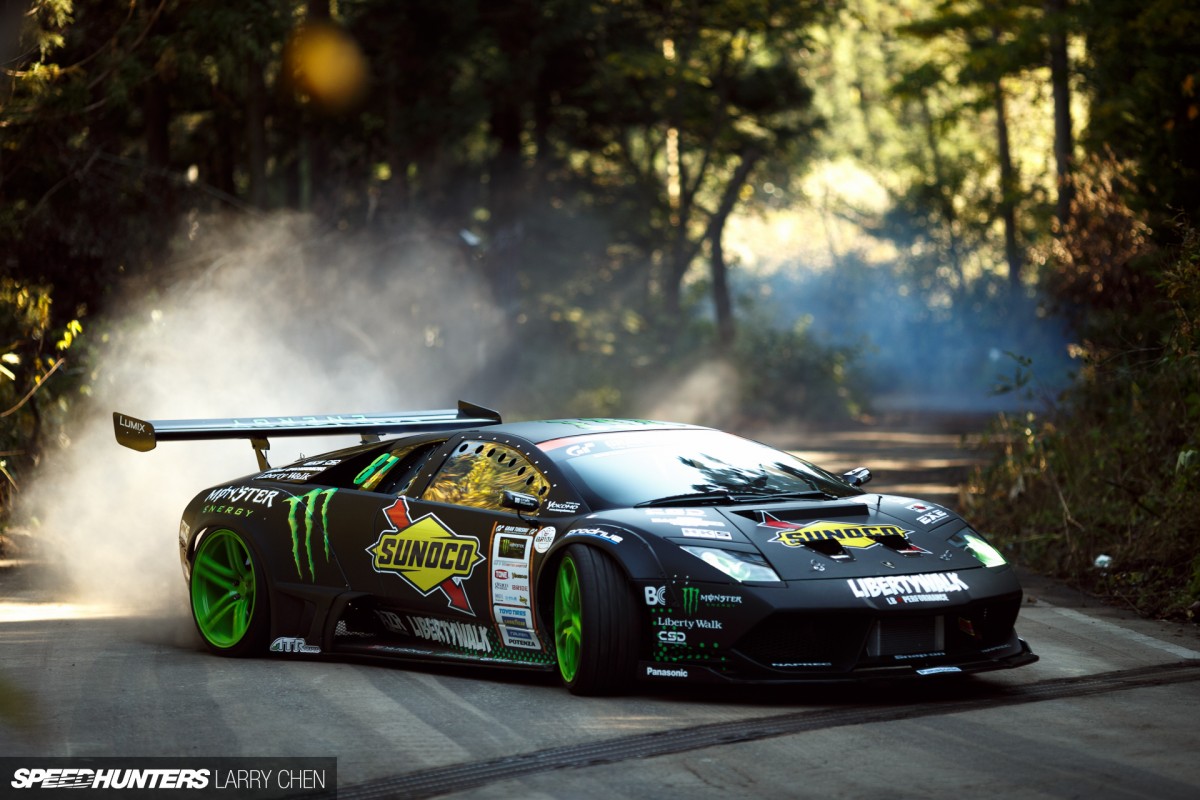
The more you look at this car, the more it almost doesn’t make any sense. I mean, how the hell do you keep a thing like this sideways? Well, on the steering side of things there was a need to completely rethink the geometry in order to achieve the required amount of angle – lots. Plus, think of the amount of weight in the rear as the 6.2L V12 and its driveline swings around like a big, fat pendulum. In upgrading the steering, the stock rack was binned and replaced with one out of a Toyota Celsior and the spindles were swapped with Supra items. Ikeya Formula stepped in and designed a set of top and lower A-arms for both the front and rear before custom coil-overs were added.
FINAL CHAPTER
The Oily Bits
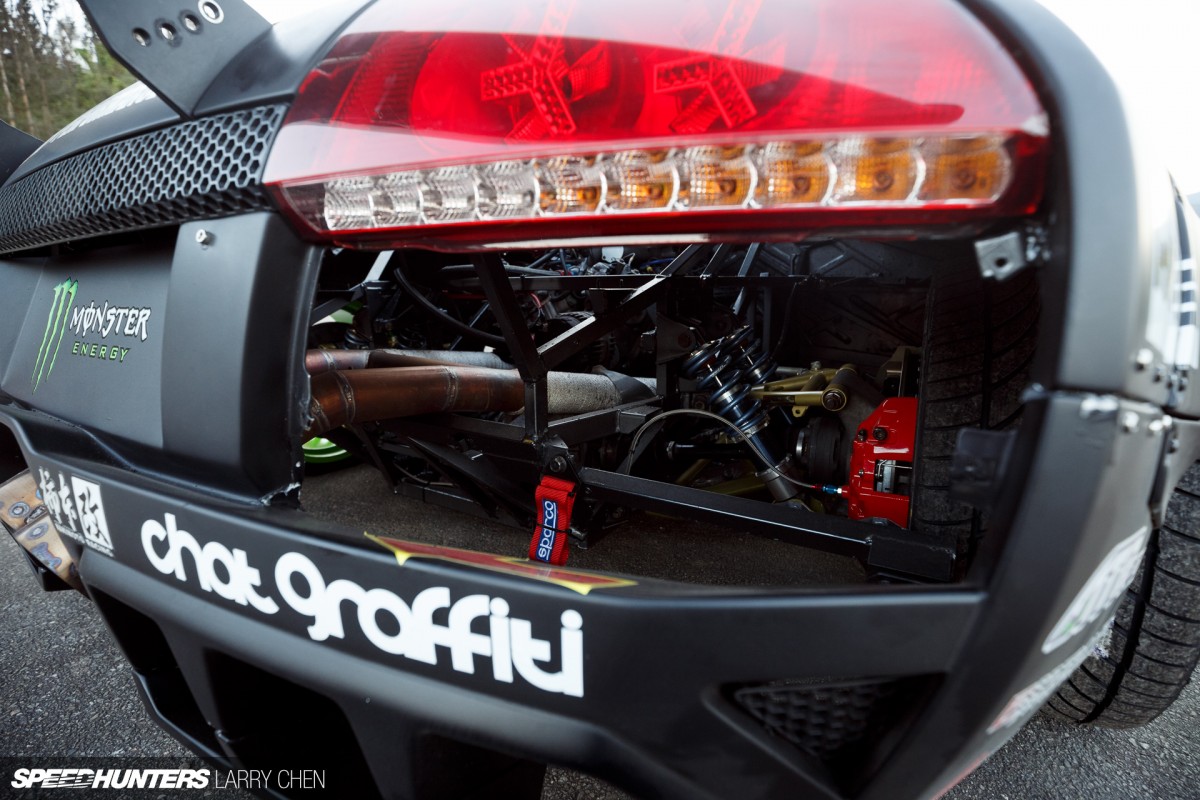
Remember what I said about all that weight at the back?
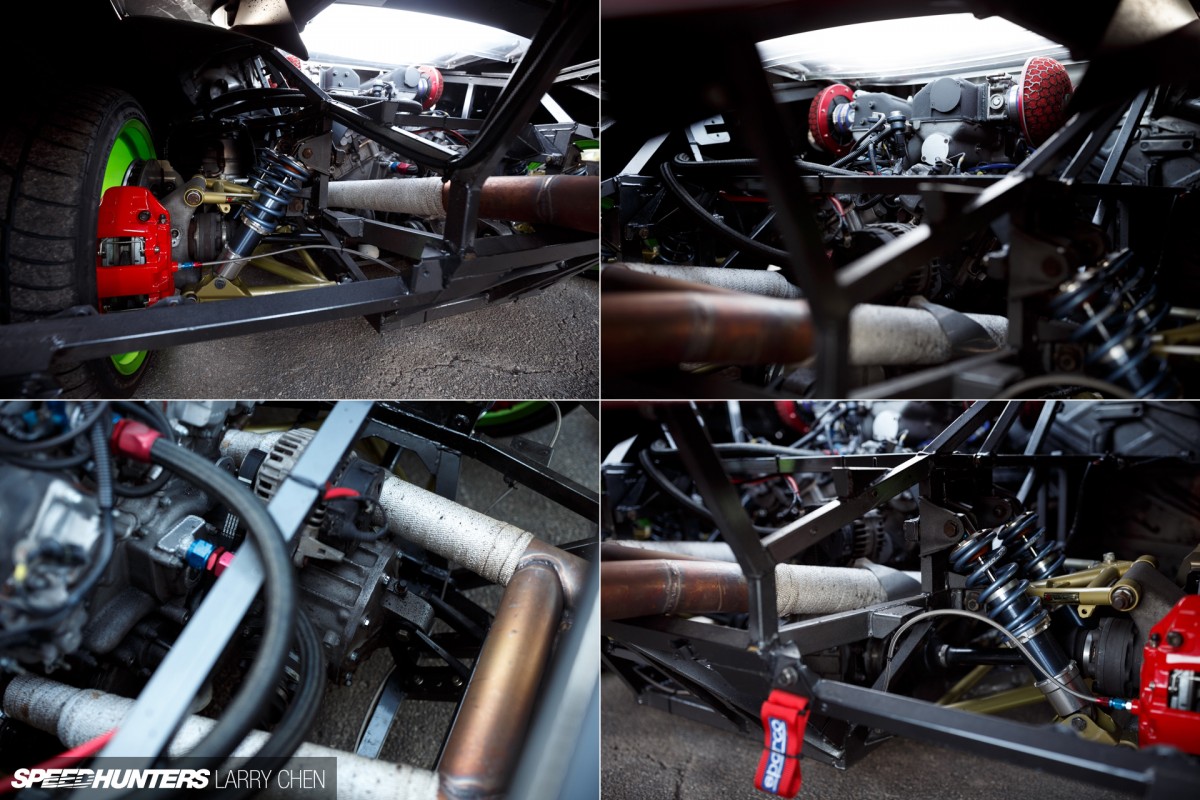
Well, that’s why the Murciélago comes with a twin coil-over setup at both corners from factory, so this thing runs six dampers in total; and just like at the front Ikeya Formula arms take care of getting all the angles squared up. Everything is mounted on pillow-balls to eliminate any slack from the linkages, transferring razor-sharp steering and chassis feel over to the driver.
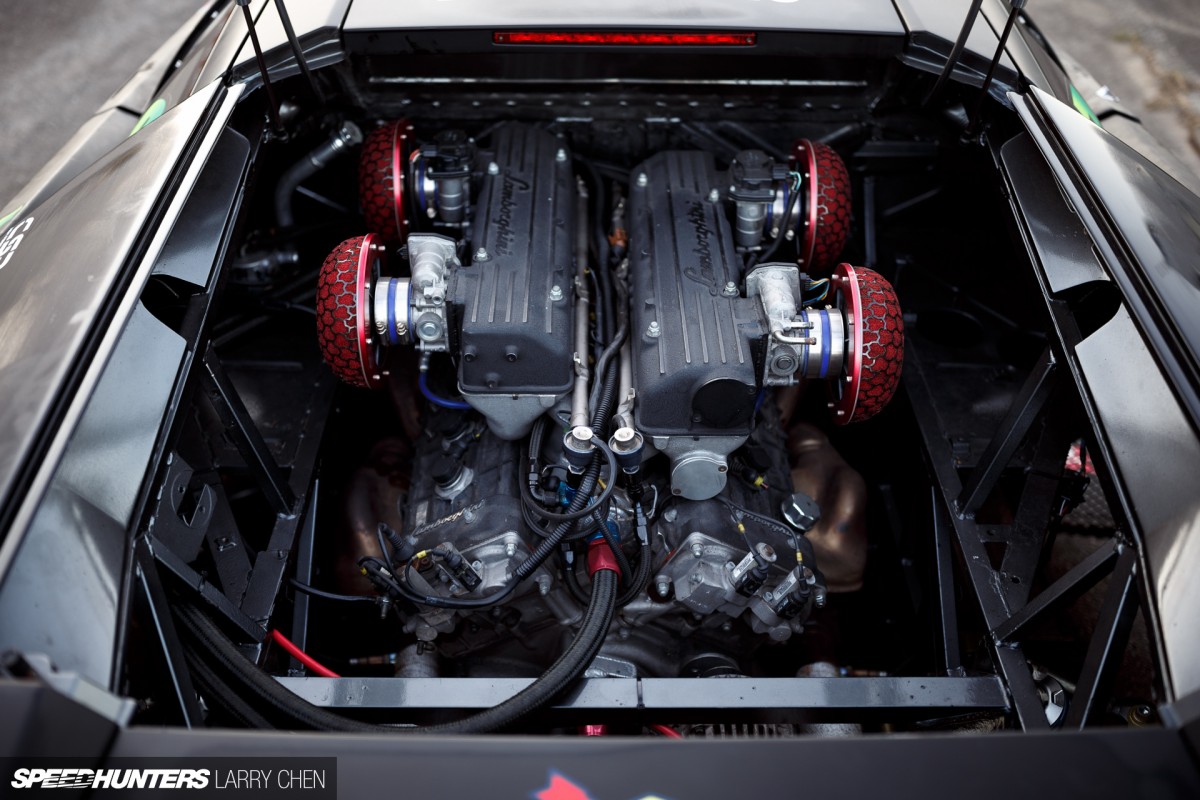
I would have loved to see Sant’
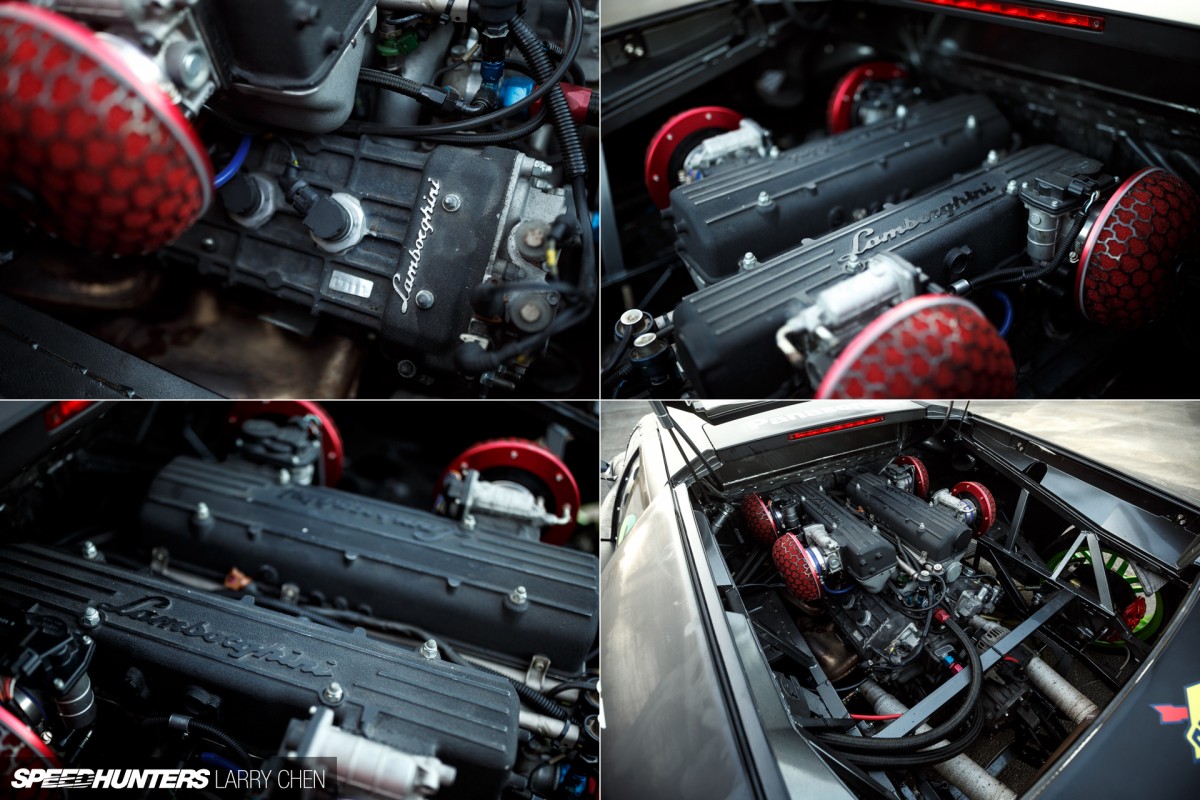
Which is exact what happened after Daigo sent the Lambo over to HKS HQ near Mt. Fuji to be strapped on the dyno and tuned. The 6.2L V12 is managed by a pair of HKS F-CON V Pro Ver 4.0 ECUs; two because these modules are really only able to manage the ignition and fuel maps for engines up to 8-cylinders in size. If you have keen eyes and you know your JDM cars, you might notice that the engine runs four Nissan VR38DETT electronically-controlled throttle bodies right behind those pod filters. These were fitted because they are faster reacting than the stock Lamborghini-spec ones, and also because they are far more compatible with the ECUs, which made things much easier.
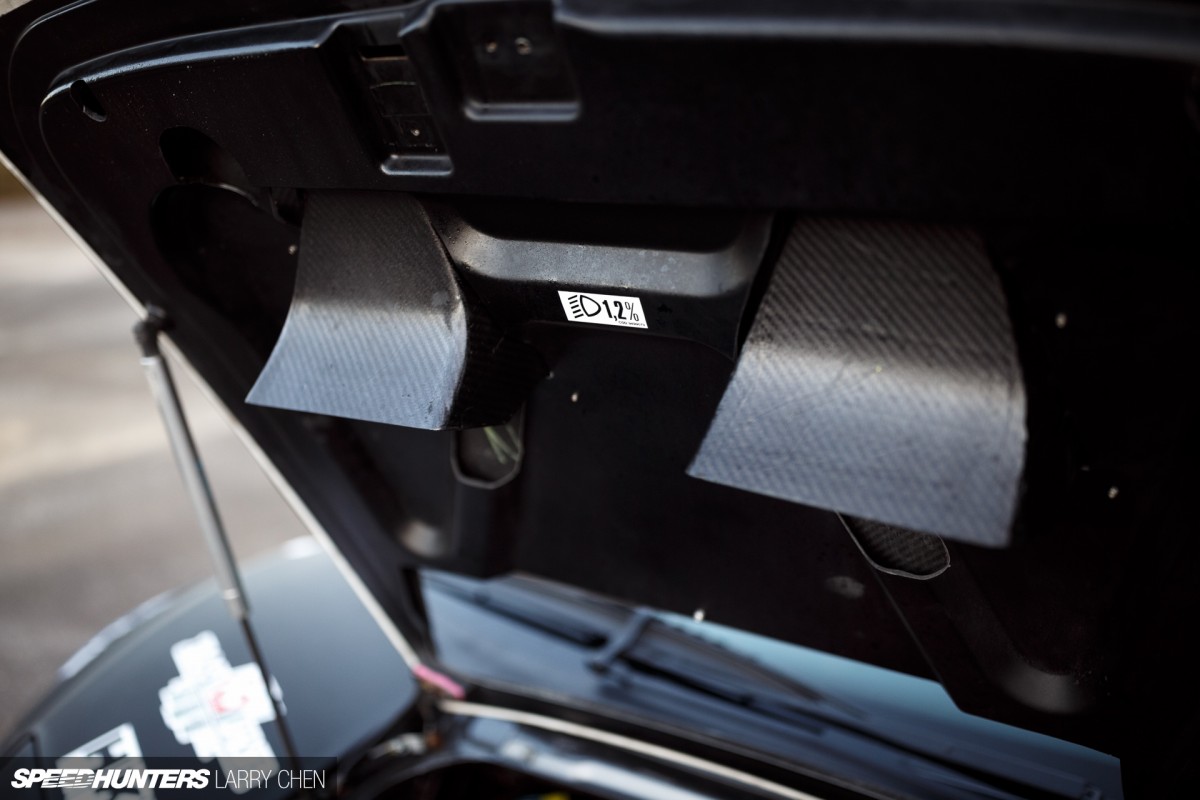
As I mentioned before, cooling is taken care of up front, and underneath the little center bonnet is a pair of pretty big intakes directing air towards the radiator.
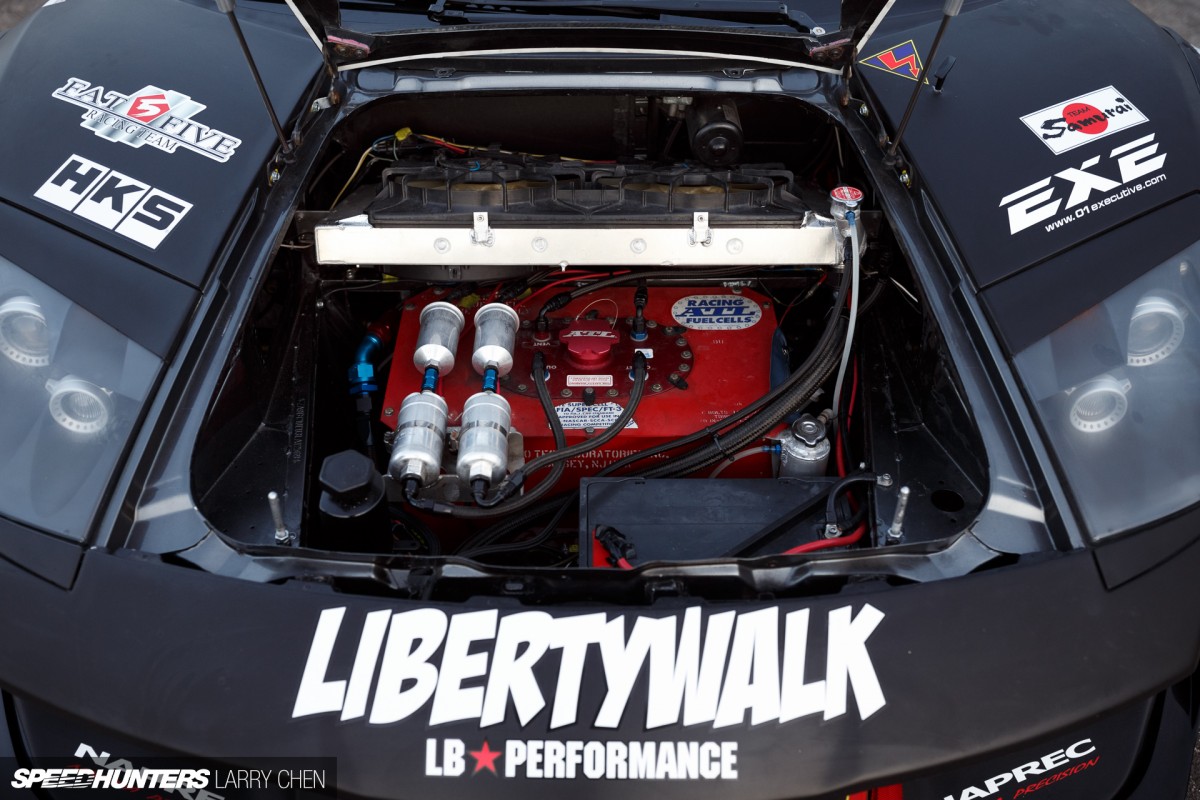
This is also where the ATL fuel cell and fuel system has been located; two external Bosch pumps keeping the V12’s thirst for race gas quenched.
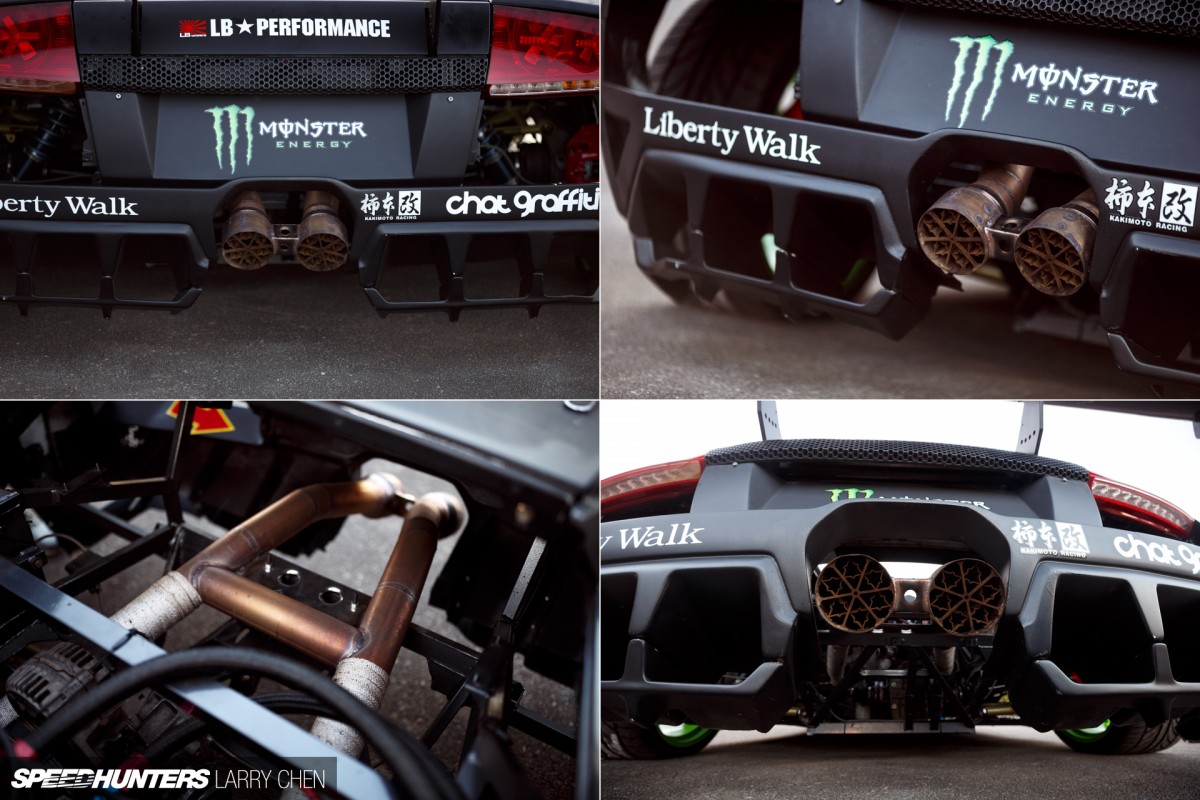
And as if the engine’s sound wasn’t already sonorous enough from factory, Daigo got rid of everything aft of the headers and called in Kakimoto Racing to design and fabricate a straight through exhaust topped up with a pair of HKS cats on the tailpipes. As you would have seen in the video, the twin exits shoot massive balls of fire. Hadouken!
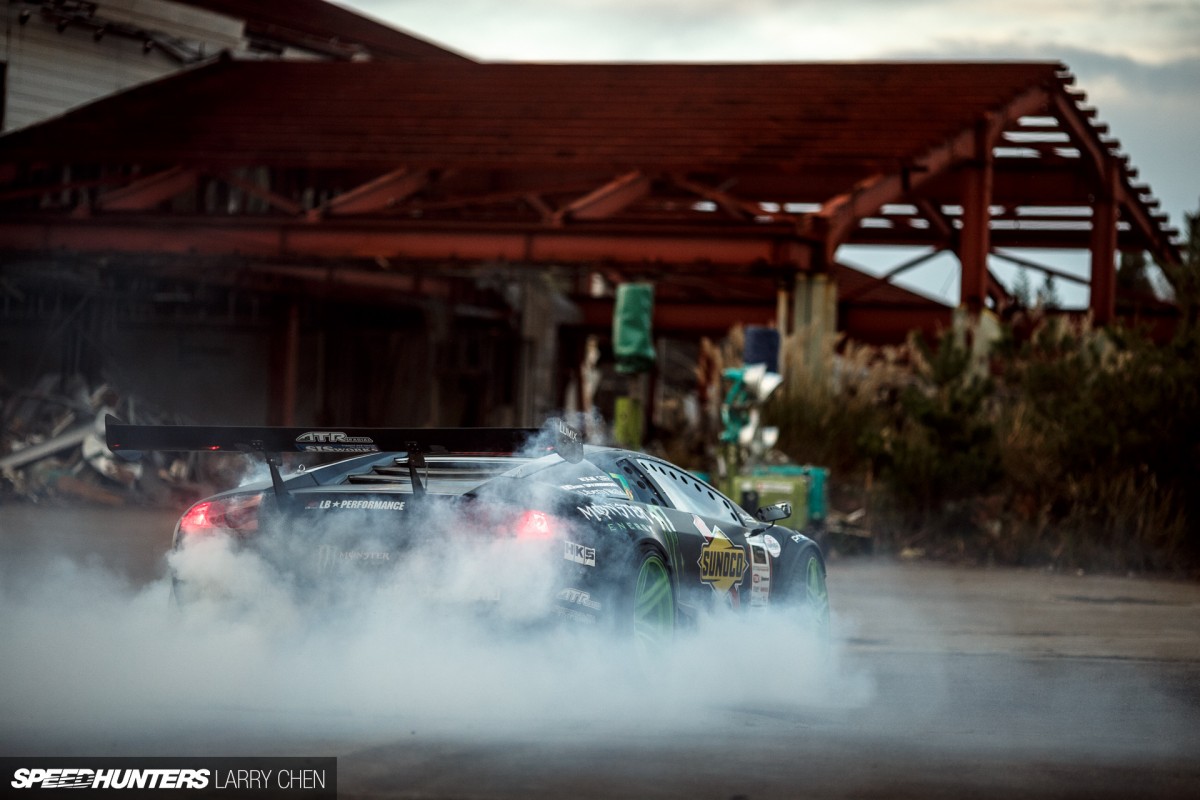
In tuning the engine for the best throttle response and mid-range torque, HKS was able to extract 650PS, which under the careful modulation of Daigo’s right foot translates to a lot of tyre smoke. It’s a decent improvement from the Murciélago’s stock 580PS, and on par with the 6.5L version of the motor that was used in some versions.
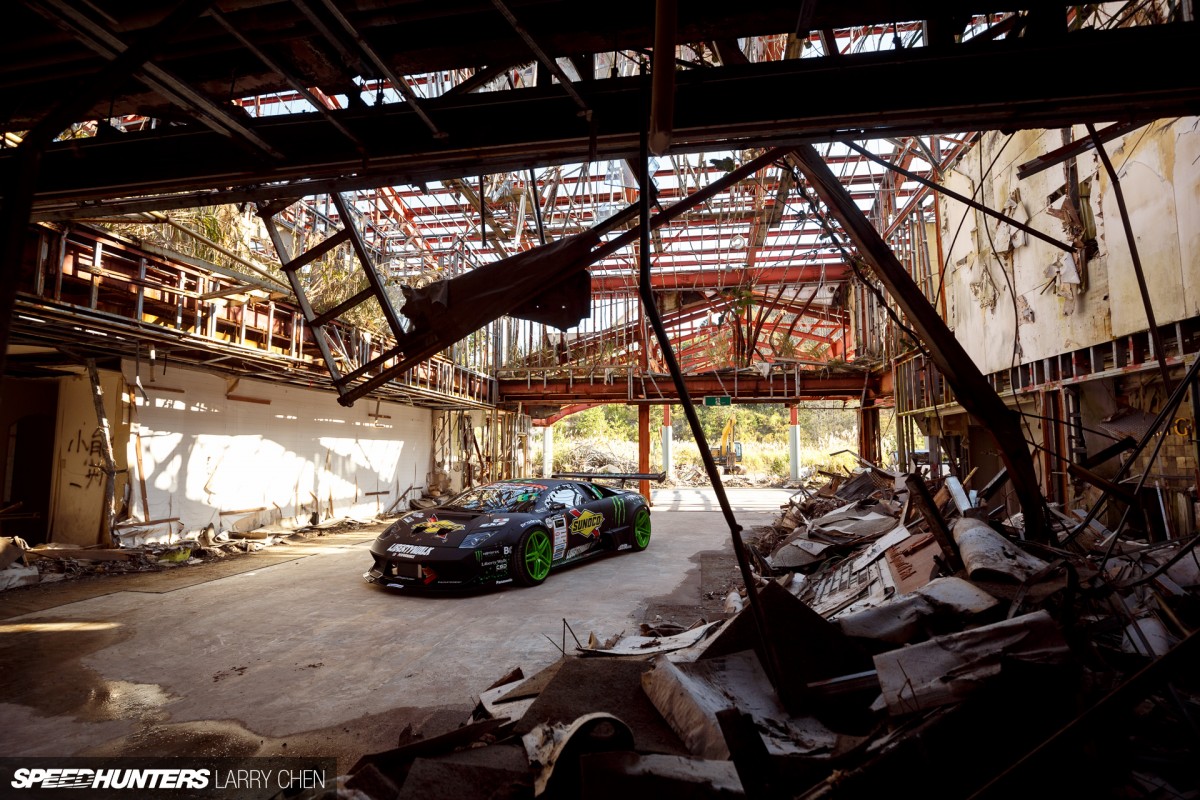
The Monster video was one hell of a way to introduce this crazy project to the world!
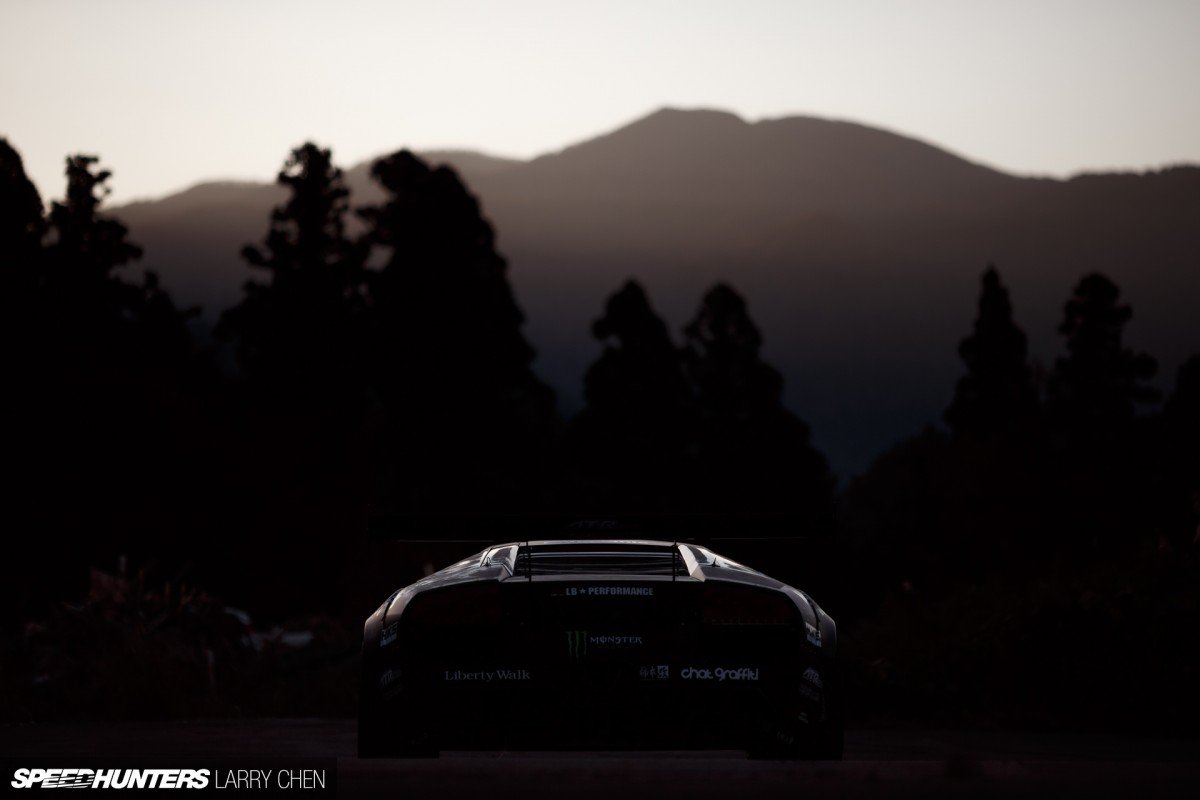
Needless to say, we want to see more of this car, and I really do hope that Daigo runs it in D1GP next year as a replacement for his trusty JXZ chassis.
I for one, just like the fact that there are people out there who are never content with what they achieve and are always striving to push the boundaries. Daigo, and all the people involved in this project, we salute you!


No comments:
Post a Comment